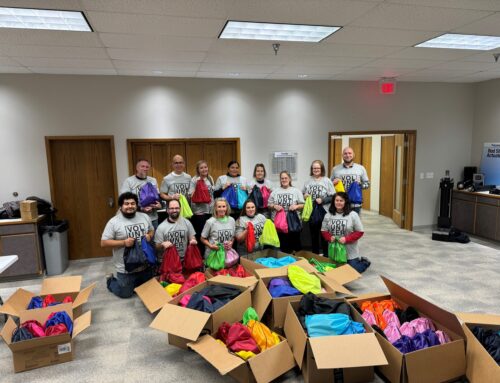Addicted. One doctor’s Take On The Opioid Crisis
“It was the first time I was ever hooked to something and would get sick from not using. Then they took away my prescription. I ended up selling all my valuable stuff to buy pills on the streets. Forget some of my obligations. I hated who I had become.”
Jerry Chappell is one of the two million Americans living the nightmare of addiction to prescription pain medications. His story is not only compelling, but all too familiar to those of us who work in addiction medicine.
Addiction to prescription pain medications and heroin is not a new phenomenon. In 2008, I developed and ran an opioid use disorder clinic out of my outpatient practice in rural West Virginia. Although death by overdose was not considered a national epidemic or a political hot topic for the media, my neighbors, colleagues, friends’ parents, and many of the people living in the Ohio Valley were suffering and dying from their addictions.
The two years of engaging patients in a comprehensive medical/behavioral treatment plan, encouraging their participation in peer and community sober support systems, and watching them meet their recovery goals were the most rewarding years of my clinical practice. During these years, I learned that patients can manage their chronic disease when they are managed by qualified physicians, provided with evidence-based medicine, and administered proper medication-assisted treatments (MAT) and urine drug screens (UDS). In 2010, I closed my practice and took a position in managed care.
The following two years were the most somber and frustrating in my professional career. At first I wondered, “Why are few of my colleagues experiencing the same feelings of reward and accomplishment that I had treating those suffering from addiction? Why are people still dying of overdose?” Then, I started receiving the not-so-infrequent calls, texts, and photos from my medical assistant back in West Virginia. Sometimes she would send snapshots of the latest evening news from her television screen. One after another were sad stories of previous patients having relapsed, been arrested, overdosed, or died. Even while writing this, I am haunted by feelings of guilt and questions of “What if I had stayed? Would they still be alive had I not left them?”
A great deal of my career since then has been dedicated to promoting quality care and services for those with Opioid Use Disorder. Over the last six years, those of us in the payer, or insurance coverage, industry have seen a “perfect storm” of events giving rise to the epidemic we see today. More potent pain medications have been manufactured and sales continue to rise. Increased utilization and demand for addiction services have quickly overwhelmed a system with few addiction specialists. A lack of industry-wide standards have resulted in extreme variance in treatment modalities.
These factors are not the primary reason that the opioid epidemic has received national attention: The face of opioid addiction has changed. Although still in existence, images of the poor, minorities, derelicts, and those on the fringe of society have been replaced by images of the rich, famous, young, and white. Methadone clinics have been replaced by posh destination facilities offering personal training, yoga, seaside views, and five-star culinary. Scholarships and graduation certificates replace the guarantee of transparency, outcomes, and results. An emphasis on “access to care” outweighs the demand for quality.
Fortunately, addiction medicine is now recognized as a medical specialty: research and clinical experience have resulted in standards of care, clinical guidelines, and evidence-based practice. The challenge now is combatting a billion dollar industry beholden to old, ineffective treatment practices, and replacing them with medicine-based and data-driven treatment models like we have for every other epidemic we have faced in modern times.
Perhaps one day the norm will be stories of people getting their lives back, year-over-year decrease in death by overdose, and practices based on science, research, and evidenced-based medicine. Hopefully we all will feel the sense of reward and hope that I did over a decade ago while practicing in rural America.
If you or a loved one are struggling with addiction, utilize Community Health Charities’ opioid and addiction health resources for response toolkits, intervention guidelines, risk factors, and more. To learn more, utilize our charity partners’ additional resources: Shatterproof, Hazelden Betty Ford Foundation, and National Council on Alcoholism and Drug Dependence.
About Dr. James

Dr. Frank James earned his law and medical degrees at Southern Illinois University. He is board certified in General, Child and Adolescent and Forensic Psychiatry as well as Addiction Medicine.
Dr. James spent his clinical years providing inpatient and outpatient psychiatric services in underserved areas in the Ohio Valley. He developed a specialty outpatient clinic for opioid use disorder (OUD). His treatment model focused on the integration of group therapy and psychotropic medication management with the use of urine drug screens (UDS) and medication-assisted treatment (MAT).
For the last seven years, Dr. James has worked in managed care. He provides large behavioral health organizations guidance in drafting evidenced-based benefit guidelines specific to OUD treatment and service, including level of care determination, MAT prior authorizations, and UDS coverage determination. His current focus is medical/behavioral integration and alternative payment model development for substance use disorder services.
Dr. James is a member of the American Society of Addiction Medicine (ASAM) Finance Committee and Policy Committee. He is the vice chair of ASAM’s Payer Relations Committee, and alternate to ASAM’s board of directors for Region III.








